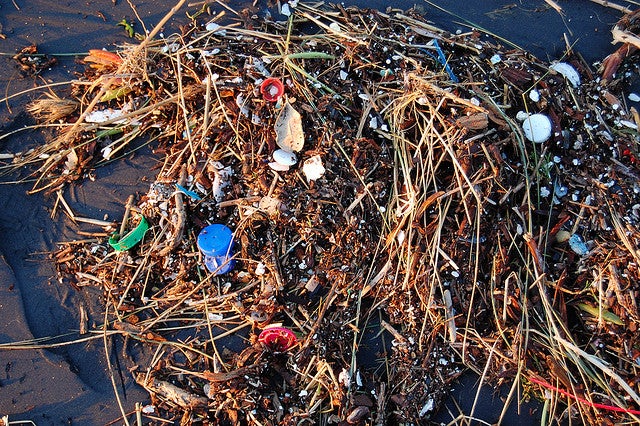Friday Finds: The Case of the Missing Plastic
Researchers have found that 99 percent of the plastic that should be in the ocean is missing.

This page was published 11 years ago. Find the latest on Earthjustice’s work.
Have you ever dropped your phone in the water, never to find it again?
Well, according to new research out of Australia, that’s exactly what’s happening to 99 percent of the plastic that should be in the ocean; except, instead of one phone, we’re talking about millions of tons of plastic phone cases, straws, water bottles and other items that plasticize our lives.
That much plastic should be easy to find in our ocean’s waters, yet a couple of years ago when four ships set out to find this plastic, spending months trailing fine mesh nets around the world, the ships came up surprisingly light—netting only about 40,000 tons of plastic at most, reports Science magazine. Good news, right?
Not exactly. Normally it would be great to not find a bunch of garbage in our oceans, but the fact remains that we know it should be there. So where is it?
Nobody really knows, but they have a few theories. One is that marine animals like fish could be eating the plastic, which could spell bad news for anyone higher up the food chain (i.e. humans). According to Science mag:
“When plastic is floating out on the open ocean, waves and radiation from the sun can fragment it into smaller and smaller particles, until it gets so small it begins to look like fish food—especially to small lanternfish, a widespread small marine fish known to ingest plastic.”
In addition to the disgusting notion that anytime you eat fish you are potentially biting into tiny fragments of plastic—floss, anyone?—the more serious concern is that you could also be ingesting toxic chemicals such as like DDT or mercury, which tend to cling to the surface of the plastic. And don’t forget about the chemicals that plastics themselves are made of, like bisphenol A (BPA), which is used to harden plastic and has come under a lot of scrutiny over the past few years for its suspected effects on the brain, behavior and prostate gland for fetuses, infants and children.
Of course, as the various researchers interviewed in the article pointed out, it’s possible that the plastic could be ending up in plenty other places besides fish, like on the shore or the sea floor.
Regardless of where it’s landing, it’s clear that our plastic consumption is wreaking havoc on the environment and on ourselves. Fortunately, some cities and states are finally taking notice. Over the past few years, over a hundred cities have passed plastic bag bans to cut down on the more than 1 billion plastic bags used in the U.S. In addition, Illinois recently began the first state to ban the manufacture and sale of personal care products containing synthetic plastic microbeads, which are non-biodegradable plastic particles used as exfoliants in skin care products.
According to an article in the Chicago Tribune, preliminary studies in Lake Michigan have found millions of microbeads, which can suck up toxins and harm wildlife who ingest them. At least four other states are considering similar bills. The ban is a great step, albeit a micro-sized one, towards stopping the plasticization of our oceans.
Learn more about Earthjustice’s campaign to build healthy, resilient and plastic-free ocean ecosystems.
The California Regional Office fights for the rights of all to a healthy environment regardless of where in the state they live; we fight to protect the magnificent natural spaces and wildlife found in California; and we fight to transition California to a zero-emissions future where cars, trucks, buildings, and power plants run on clean energy, not fossil fuels.
The Florida regional office wields the power of the law to protect our waterways and biodiversity, promote a just and reliable transition to clean energy, and defend communities disproportionately burdened by pollution.
Established in 1988, Earthjustice's Mid-Pacific Office, located in Honolulu, Hawaiʻi, works on a broad range of environmental and community health issues, including to ensure water is a public trust and to achieve a cleaner energy future.